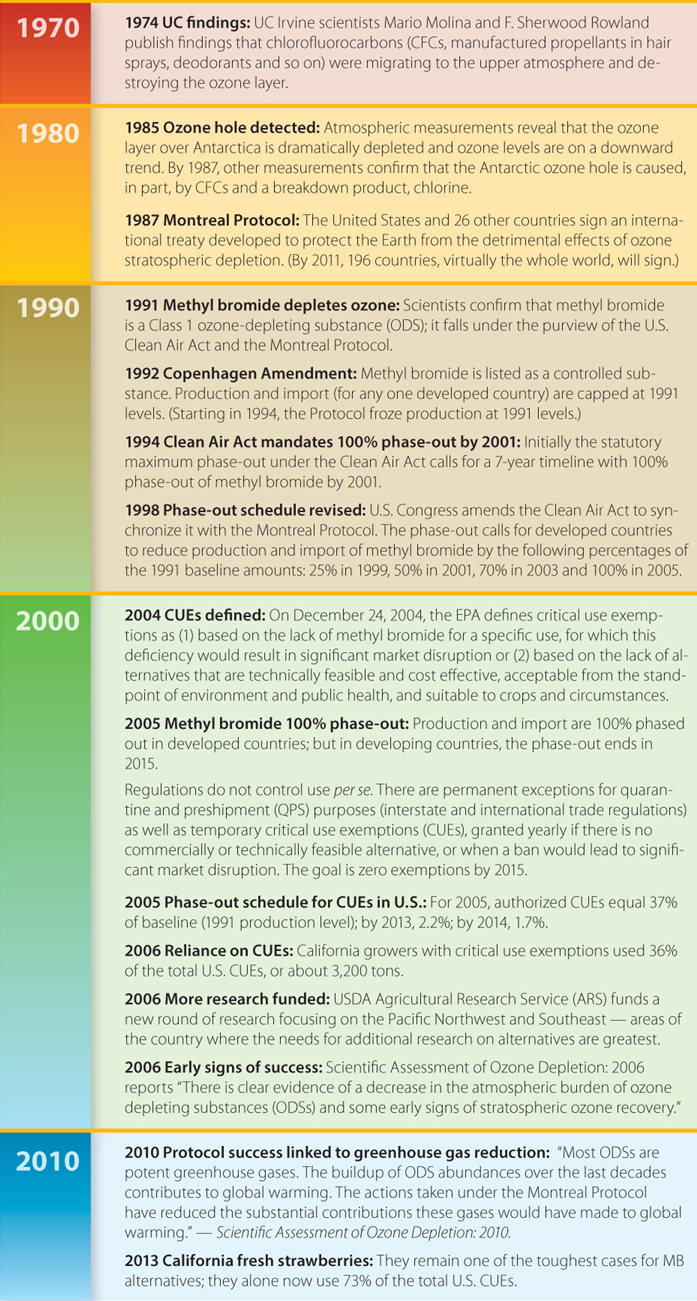All Issues
Methyl bromide primer and timeline
Publication Information
California Agriculture 67(3):121-121. https://doi.org/10.3733/ca.v067n03p121
Published online July 01, 2013
NALT Keywords
Full text
For decades, methyl bromide (MB) was agriculture's magic bullet. Injected into soil to a depth of 1 to 2 feet, this toxic and volatile fumigant would kill almost all microorganisms—nematodes, fungi, other pathogens, insects and weeds. It proved highly useful for many of California's signature crops, especially as a preplant treatment for sensitive annuals such as strawberries and tomatoes, or before replanting vineyards and orchard crops such as almonds and peaches. It boosted yields so effectively that researchers could not fully explain its benefits.
But in the early 1990s, atmospheric research revealed that MB was among the class of ozone-depleting substances (ODSs). Although MB occurred naturally, humans had added significant amounts to the stratosphere (the upper atmosphere, from 11 to 31 miles above the Earth's surface); the MB breakdown product, a bromine atom, thinned and destroyed the ozone layer, which otherwise protected humans and other life from damaging ultraviolet light.
Methyl bromide was scheduled for 100% phase-out by 2005 under the Montreal Protocol and the U.S. Clean Air Act. By that year, scientists had published prodigious amounts on alternatives, but in some specific situations growers still lacked clear, alternative production regimes. To be useful, new strategies had to be specific to different soils, climate conditions and crops over extended periods of time.
The bad news was that MB's remarkably consistent performance in controlling myriad pests could not be duplicated by any one replacement. Also, standard chemical alternatives were increasingly regulated due to concerns about air pollution and toxicity to workers and nearby populations.
The good news was that by 2006, the World Meteorological Organization (WMO) Scientific Assessment (and later assessments) reported a decrease in the atmospheric burden of ozone-depleting substances and early signs of stratospheric ozone recovery. The treaty was working — and helping to stem climate change as well.
Below is an abbreviated timeline of scientific findings and policy decisions.





